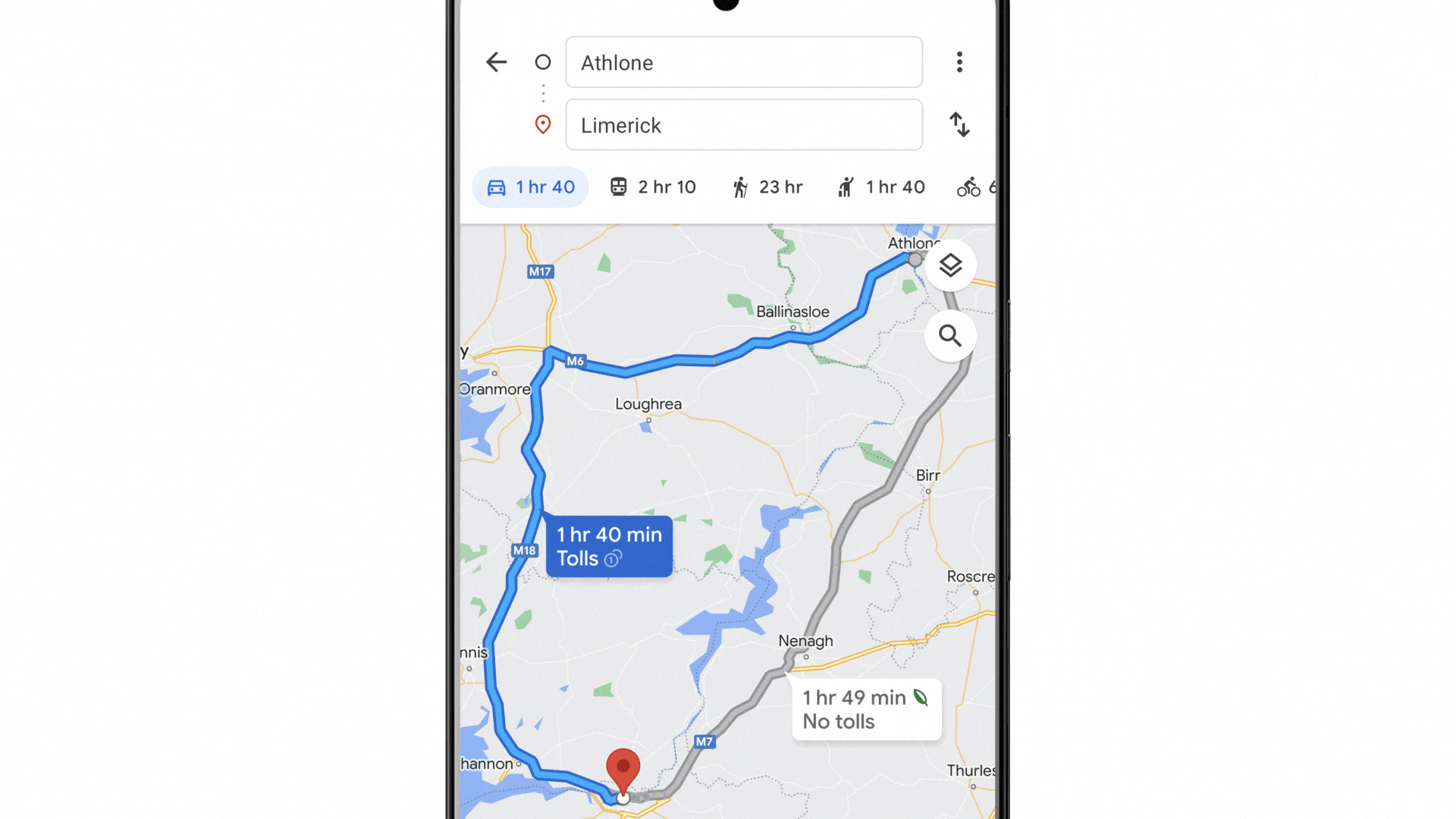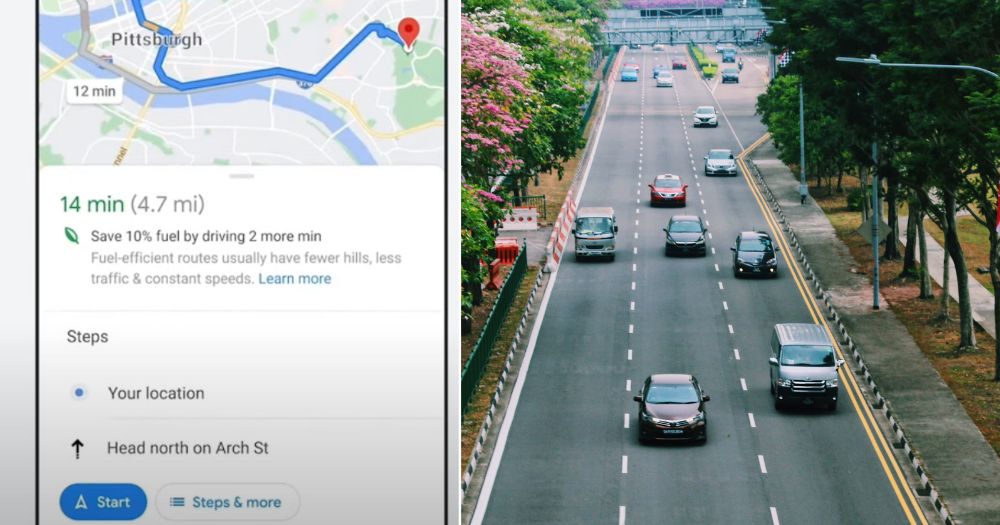Follow us on Telegram for the latest updates: https://t.me/mothershipsg
Google is in the works of making eco-friendly routing a feature available for motorists in Singapore.
Eco-friendly routing in Google Maps is now available in the U.S., Canada and nearly 40 countries across Europe today.
How it works?
Motorists who use the suggested eco-friendly routes will be directed to the most fuel-efficient route to get to their destinations. These routes may or may not be the fastest way.
According to a recent blogpost by a senior product manager at Google Maps, the most fuel-efficient route will vary according to the type of engine used.
Drivers using the eco-friendly routing will have to select their engine type — petrol or gas, diesel, hybrid or electric vehicle (EV) — in order to get the most accurate fuel or energy efficiency estimates.
Here's a demonstration of the eco-friendly routing on the Google Maps.

For this eco-friendly routing model to work, the tech giant works with the U.S. Department of Energy’s National Renewable Energy Laboratory (NREL) and data from the European Environment Agency.
Since the launch in the U.S. and Canada, Google estimated the feature to have helped remove more than half a million metric tons of carbon emissions. That is equivalent to taking 100,000 fuel-based cars off the road.
Right now, users of Google Maps in Singapore can only see three driving route options on the app: Avoid motorways, avoid toll roads, and avoid ferries.
When asked about the launch date of this feature, a spokesperson of Google Singapore told Mothership that they are unable to provide a timeframe at this point. However, she confirmed that Google Maps will soon roll out this feature in Singapore.
Google's Head of Geo Christopher Phillips told CNA that launching this feature in Singapore is "a matter of time".
Right now, the company is focused on getting the calculation of the eco-routes right by taking into consideration of the local nuances.
Top image via Google and Kylle Pangan/Unsplash
If you like what you read, follow us on Facebook, Instagram, Twitter and Telegram to get the latest updates.
